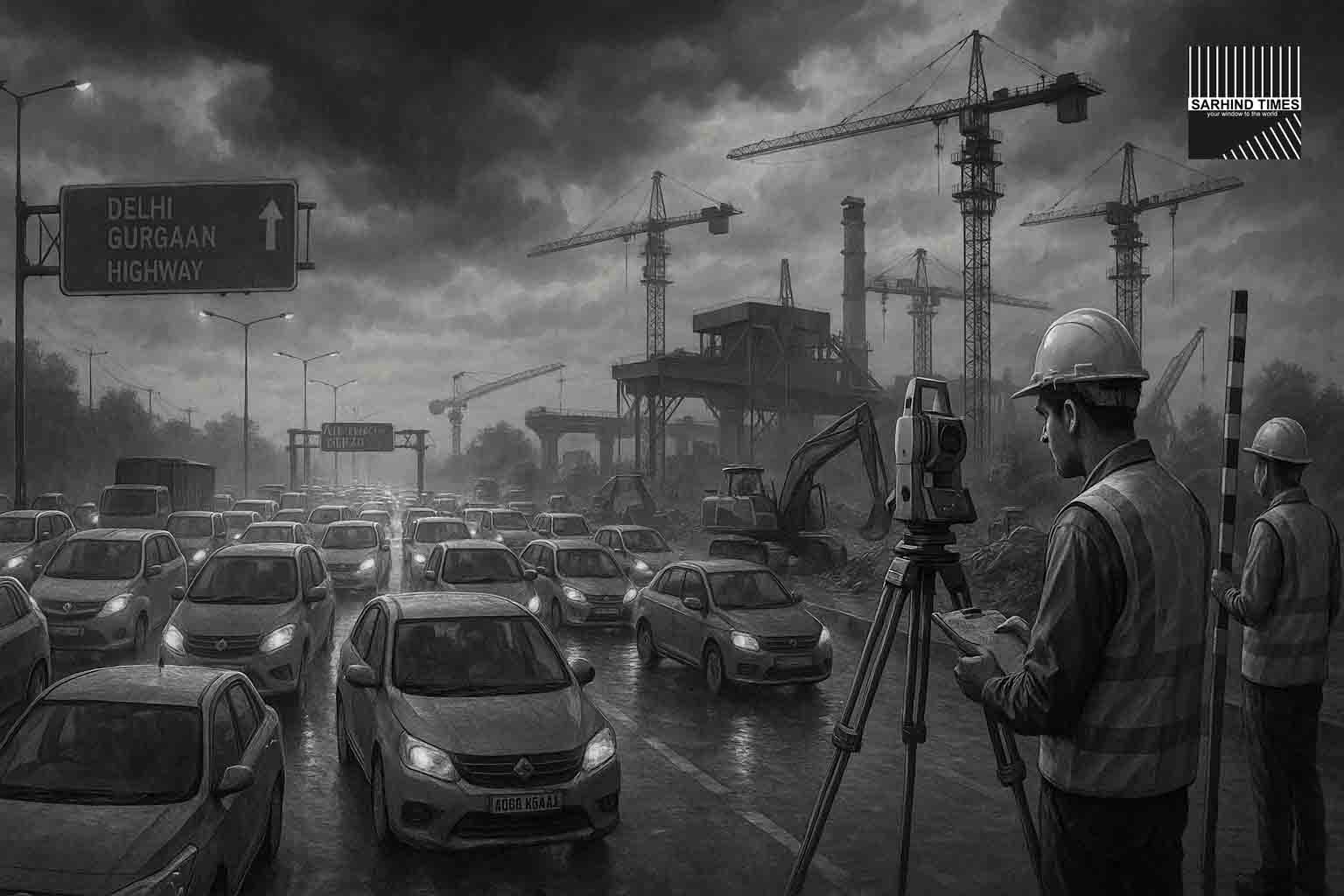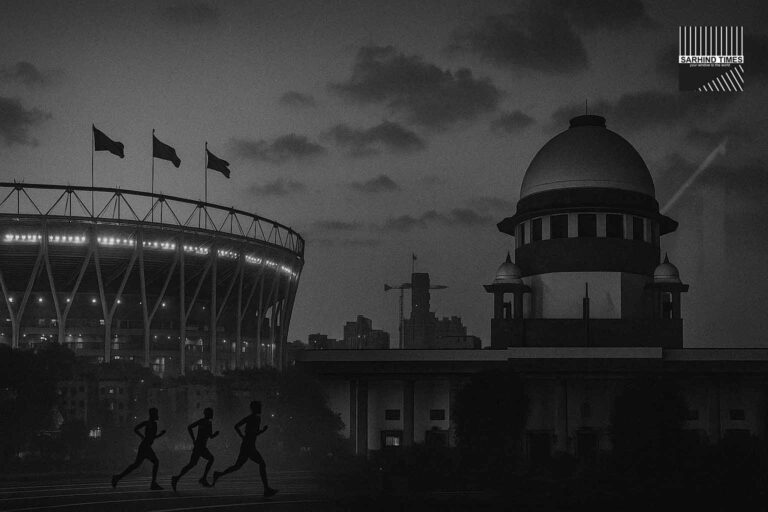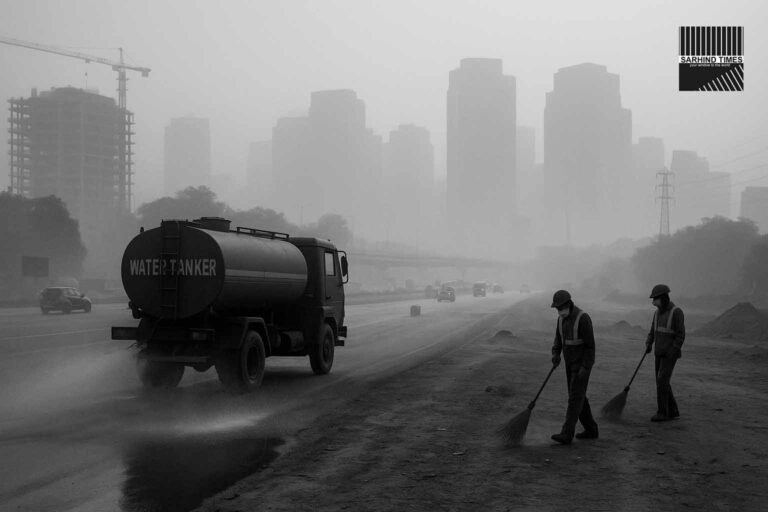By Sarhind Times NCR Infrastructure Desk
Gurgaon, Sept 30
Relief may soon be on the horizon for weary commuters of the Delhi–Gurugram Highway (NH-48) as the National Highways Authority of India (NHAI) has formally initiated the Detailed Project Report (DPR) process for a new elevated corridor designed to tackle chronic snarls across one of NCR’s busiest stretches.
Officials said the scope of the DPR, for which bids have been invited, will include traffic modelling, pillar placement options, interchanges, drainage solutions, and financing structures. The study is targeted for completion by mid-October, after which alignments and project costs will be finalised.
🚨 Key Features of the Proposal
- Corridor Length: Covering the most congested Hero Honda Chowk–IFFCO Chowk segment.
- Design Elements: Pillar placement to minimize land acquisition; interchanges for smoother merging.
- Urban Integration: Ties with Rapid Metro, service roads, and bus bays.
- Drainage Retrofits: To avoid repeat of recent flood gridlocks.
- Emergency Provisions: Lay-bys for breakdowns and quick clearance.
- Under-Flyover Utilisation: Parking bays, green belts, and last-mile solutions.
Chronic Congestion: The Background
The Delhi–Gurugram Highway is among NCR’s busiest corridors, carrying:
- Commuters: Thousands of daily office-goers to Cyber City and Udyog Vihar.
- Logistics: Freight vehicles linking Delhi with Jaipur and beyond.
- Inter-city Transit: Buses and taxis servicing IGI Airport and Gurugram hubs.
Yet bottlenecks at Hero Honda Chowk, Rajiv Chowk, and IFFCO Chowk frequently paralyse traffic, especially during rains. The July 2023 flood gridlock saw commuters trapped for hours, spotlighting the urgent need for structural redesign.
Stakeholder Concerns
Urban Planners
Planners caution against “stacking congestion.”
“If you just build another elevated road without integrating it with public transport and service roads, you shift the jam skywards instead of solving it,” said a Gurgaon-based planner.
Resident Groups
Residents want holistic features:
- Flood-resilient drainage.
- Noise barriers near housing societies.
- Safety features for pedestrians crossing near Metro stations.
Commuters
Regular office-goers demand time savings:
- “A 20-minute drive often takes 90 minutes at peak. We don’t want another half-solution,” said a commuter from Sector 31.
Engineering & Design Considerations
- Traffic Modelling: Anticipates 15–20 years of projected demand.
- Land Acquisition: Aims to minimize displacement by using median pillars.
- Multimodal Integration: Rapid Metro access, bus bays, pedestrian underpasses.
- Smart Tech: Sensors for flood alerts, CCTV surveillance, digital signages.
Financing the Project
NHAI sources said financing structures could include:
- Public-Private Partnerships (PPP).
- Toll-adjusted viability gap funding.
- State contributions under NCR decongestion missions.
Wider NCR Strategy
The move is part of a broader NCR decongestion drive, pairing with:
- Dwarka Expressway integration.
- Delhi–Mumbai Expressway linkages.
- Peripheral road upgrades for freight diversion.
Experts argue that regional synchronisation is key, as Gurgaon’s jams often spill into Delhi and vice versa.
International Parallels
Urban experts note lessons from:
- Singapore’s elevated expressways: Integrated with bus and metro corridors.
- Tokyo’s ring roads: Layered design with drainage channels.
- Dubai’s Sheikh Zayed Road: Under-flyover green and parking utilisation.
Environmental & Safety Lens
- Drainage: Essential after July floods, with new retrofitted stormwater channels.
- Air Quality: Noise and dust barriers required near residential sectors.
- Pedestrian Safety: Skywalks, zebra crossings at metro interchanges.
Conclusion
The elevated corridor DPR marks a critical step in transforming the Delhi–Gurugram commute from a daily ordeal into a smoother, predictable journey. While optimism runs high, residents and experts caution that the project must move beyond concrete to holistic planning—drainage, integration, pedestrian safety, and under-flyover design must be built in.
The coming months will test whether NHAI can deliver a project that not only lifts traffic skywards but also uplifts the commuter experience.
#Gurgaon #NHAI #NH48 #Infrastructure #Traffic #DPR #Gurugram #Commuters #UrbanPlanning #NCR

























+ There are no comments
Add yours